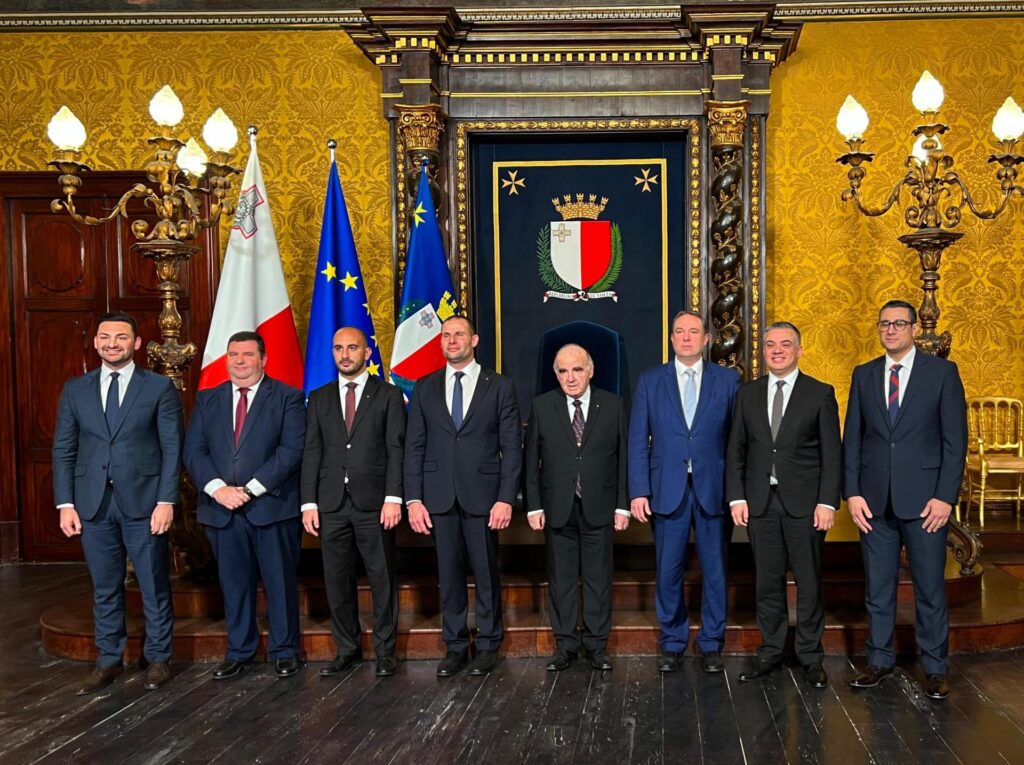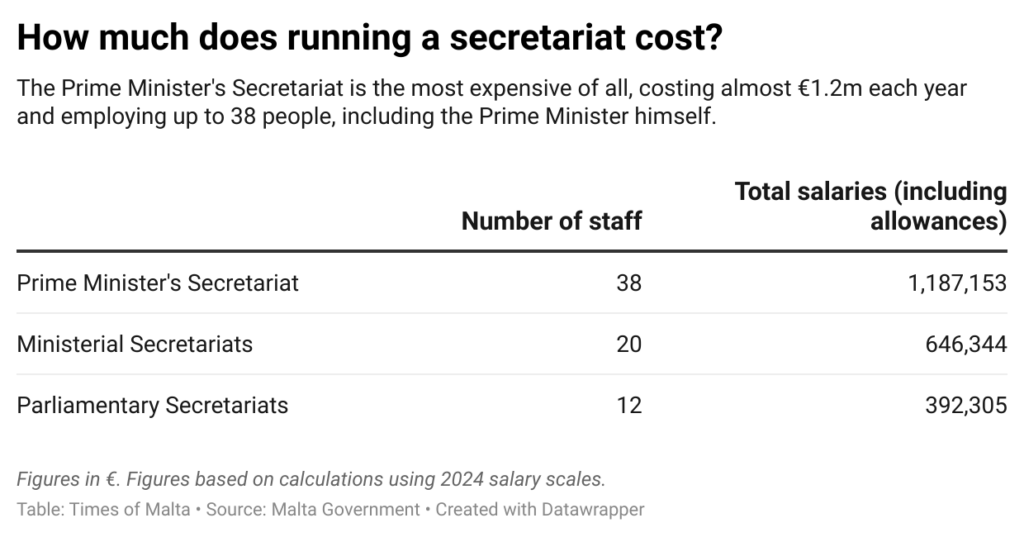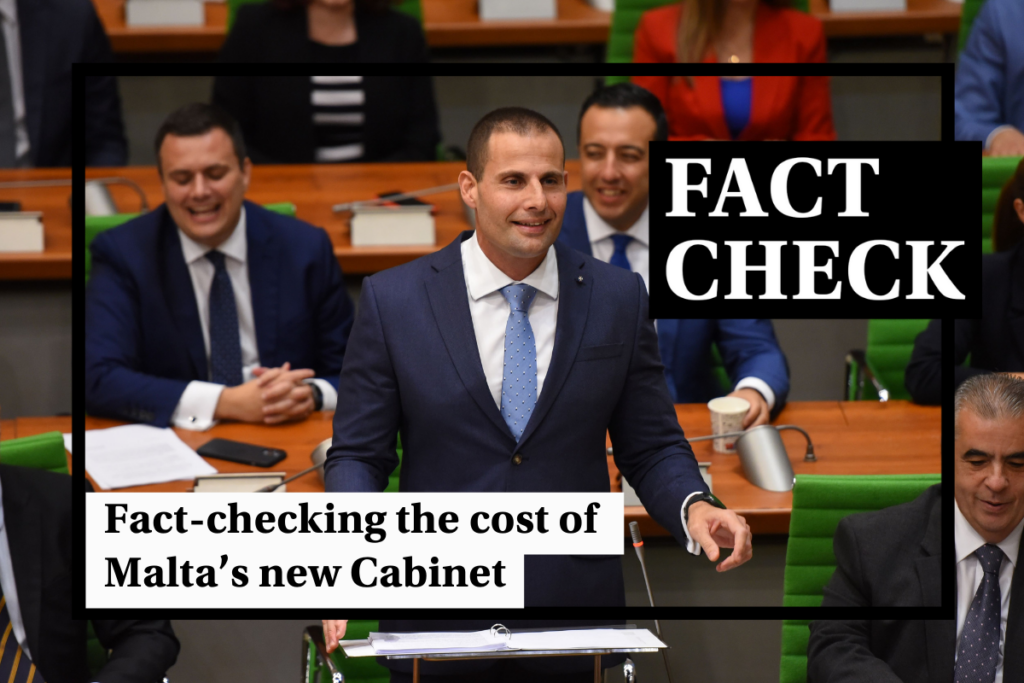A Cabinet reshuffle announced by Prime Minister Robert Abela on Saturday 6 January raised eyebrows, with the size of the new Cabinet leading many to speculate on how much it would be costing taxpayers.
This speculation was rife on social media, as well as in chat groups and discussion threads, with several wild estimates being presented backed by little evidence, often based on a flawed understanding of the number of people employed within a Minister’s secretariat. While government officials were keen to downplay the cost, others were more critical, saying that the reshuffle has meant that costs ballooned to an unprecedented level.

How big is the new Cabinet?
The reshuffle takes the number of Cabinet members up to 27 (including the prime minister himself), making it the largest Cabinet in Malta’s history. The previous record was also held by Abela who appointed a 26-strong Cabinet upon first entering office in 2020.
Following the 2022 election, Abela had appointed a slightly smaller Cabinet of 25 members, but the addition of two new parliamentary secretaries means that this is once again Malta’s largest-ever Cabinet.
An exercise carried out by Times of Malta had previously found that only Spain, Sweden and Italy had more Ministers in Cabinet than Malta. It also found that Malta topped the rankings of the number of MPs who are ministers, with 31% all MPs being ministers.
Today, over a third of Malta’s 79 MPs sit in Cabinet, either as ministers or as parliamentary secretaries. Of the government’s 43 MPs, almost two-thirds are members of Cabinet, with only 16 now serving as backbenchers.
The size of Malta’s Cabinet dwarves that of many other countries. Iceland, with a population comparable to Malta’s has a 12-person Cabinet including the Prime Minister, while Austria boasts 14 ministers including the chancellor, together with four State secretaries (similar to Malta’s junior ministers), for a total of 18.
How much does each Ministry cost to run?
The number of people employed within each ministry’s secretariat is regulated by public sector regulations. Aside from listing the total number of people that a minister or parliamentary secretary can employ, they also outline each employee’s salary grade and role.
Unsurprisingly, the costliest ministry is the Office of the Prime Minister, at just under €1.2 million or, if employees are all paid at the lower end of the their salary scale, a little over €1.1m. Public sector rules allow the prime minister to engage up to 37 members of staff in the secretariat, ranging from a head of communications to a private secretary and several officers, messengers and other staff.
Minister’s secretariats employ roughly half as many people – 19 – and cost half as much as that of the prime minister, at €600,000 at the lower end of the scale to just under €650,000 at the higher end.
Parliamentary secretaries’ secretariats are cheaper still, ranging from €369,000 to €392,000. Parliamentary secretaries can employ 11 staff members.

This means that the total cost of the Cabinet and all its staff members has now crept up to a minimum of €14.8 million and as much as €15.9 million each year, based on this year’s salary scales. This figure includes the salaries of all members of staff within the secretariat of a minister or parliamentary secretary, as well as that of the minister or parliamentary secretariat themselves.
This is roughly €780,000 more than the Cabinet cost last week, before the reshuffle saw the introduction of two new parliamentary secretaries.
Are there additional costs?
These figures do not include the salaries paid to the policy consultants engaged through the secretariat.
The prime minister may engage up to eight policy consultants within his secretariat, while Ministers can employ four if their ministry does not include a parliamentary secretary, and two if it does.
Policy consultants are paid at a maximum pro-rata rate of just over €42,500, but sources say that in practice they work irregular hours, with almost none working a full 40-hour week.
Consultants are also entitled to other allowances and perks, often depending on how many hours they work, making it difficult to quantify how much the government really spends on their services.
These calculations also do not include a rarely-used €7,000 car allowance allocated to ministers and parliamentary secretaries when they opt to use their personal car instead of an official car.
Verdict
Malta’s new Cabinet will cost between €14.8m and €15,9m each year, depending on whether members of each secretariat are paid at the lower or higher end of their salary scale.
This total does not include additional costs, such as the engagement of policy consultants by each ministry or secretariat.
The terms according to which members of the Cabinet can employ or engage people in their secretariat are documented through public sector regulations. These list the maximum number of employees and policy consultants that can be engaged, as well as their roles and salaries.





